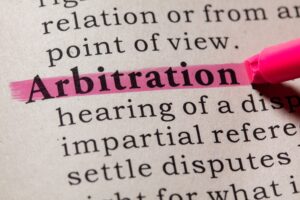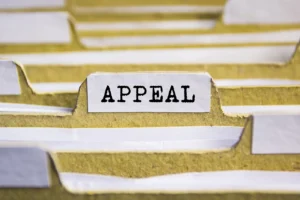
Arbitration as an Alternative in Family Law
Recently, we have had a number of cases where parties have good prospects to appeal, but a decision has been
Call us on
When finalising a Binding Financial Agreement, it is extremely important to have in place a set procedure for the execution and finalisation of these Agreements.
There have been cases where Agreements have been wrongly executed, lost or vital things not attended to which have made the Agreement invalid. Under the Family Law Act, strict compliance is generally required with the wording of the Act to make these Agreements binding.

The following is a recommended process to follow when executing Binding Financial Agreements:-
The above is just a snapshot of part of the process involved in making sure these Agreements are done properly and that the signing process is an integral part of that. There have been cases recently in the Family Court where one party was unable to produce any proof that a solicitor had provided oral advice or written advice to their client about the effect of the Agreement. If that occurs then there is a risk that the Agreement can be set aside.
Often, we hear people complain about how costly or how complicated these Agreements are. No one should be in any doubt that these are complex documents and the procedures to follow are critical to give the Agreement the best chance of withstanding future challenges to its integrity. Unfortunately, there are no short cuts to achieving this end.

Recently, we have had a number of cases where parties have good prospects to appeal, but a decision has been

Recently, we have had a number of cases where parties have good prospects to appeal, but a decision has been

Recently, we have had a number of cases where parties have good prospects to appeal, but a decision has been

© 2024 Hartley Family Law – All Rights Reserved | Privacy | Terms & Conditions

The Privacy Statement of the Company is incorporated into these Terms and Conditions. The Company respects the privacy of all its customers and business contacts. The Company is subject to the requirements of the National Privacy Principles which are contained in the Privacy Act.
1. How is personal information collected?
Your name, email address and phone number are collected on the contact form to allow the Company to contact you.
If you email or phone the Company directly, then the Company may record your personal details.
Your personal information may be used to:
a) Improve service to you, the customer
b) The Company may use personal information about you for marketing and research purposes. If you do not wish this to occur, please contact us and we will ensure this does not occur
c) Your personal information is not disclosed to any organisation outside of the Company.
2. Will personal information be given to anyone else?
The Company does not sell or provide your personal information to any other company.
3. Security of personal information
The Company employees are required, as a condition of their employment, to treat personal information held by the Company as confidential, and to maintain the confidentiality of that personal information.
The Company protects the personal information it collects in a secure database.
4. Access and correction
You can access your data at any time by contacting the Company directly.
You also have the right to ask us to correct information about you which is inaccurate, incomplete or out of date.
We ask you to contact the Company by email or phone using the Company contact details if you wish to access or correct any of your personal details.
5. Online privacy issues
To the extent that this Privacy Policy applies to online privacy issues, it is to be read as forming part of the terms of use for our website. When you deal with the Company whether online or otherwise, the Company takes its privacy obligations seriously.
6. Additional privacy information and how to contact the Company
The Company may change its Privacy Policy at any time.
For further information about privacy issues and the protection of privacy visit the Australian Federal Privacy Commissioner’s website at www.privacy.gov.au. If you feel that The Company is not complying with this Privacy Policy, or if you have other privacy concerns, please contact the company.